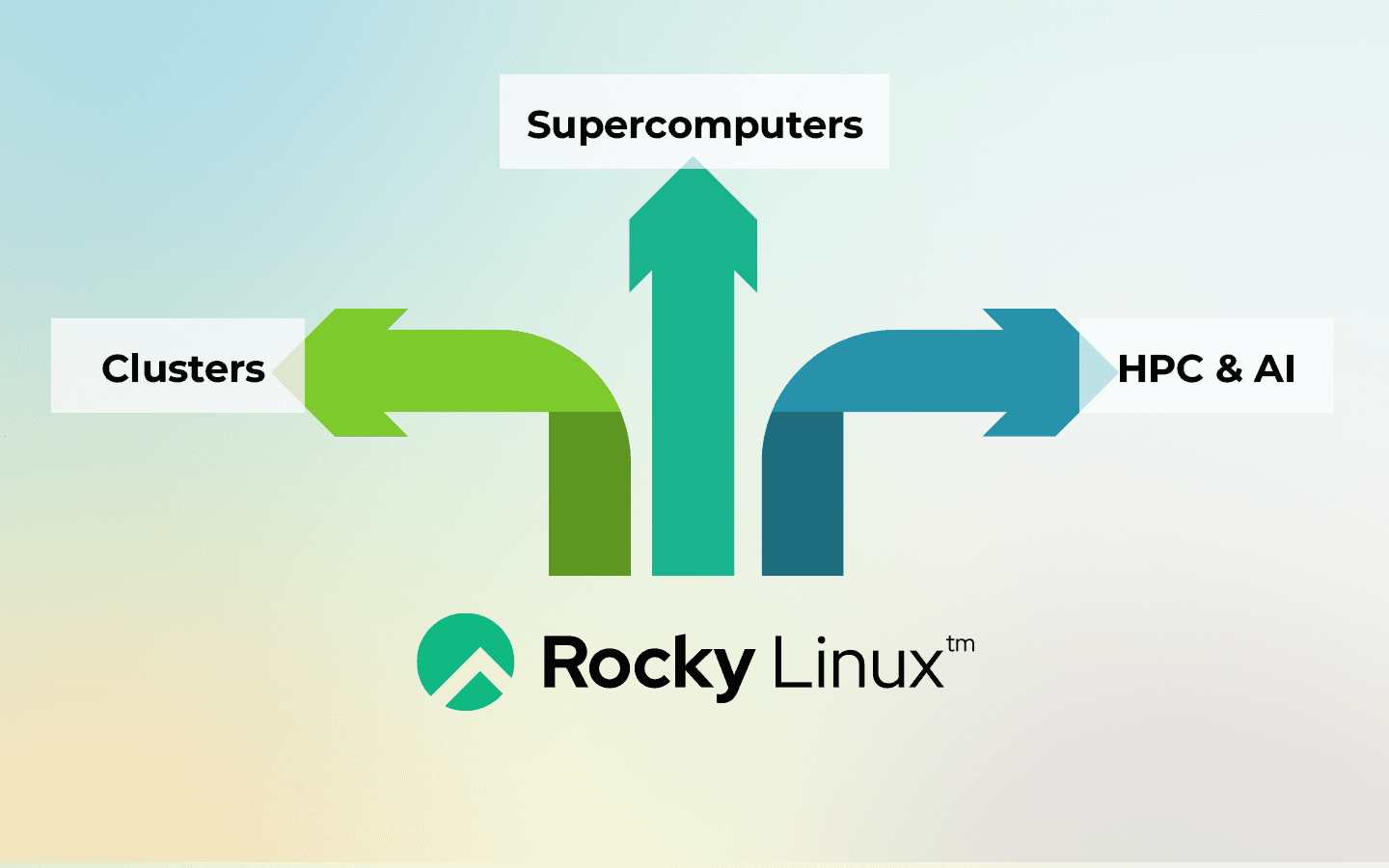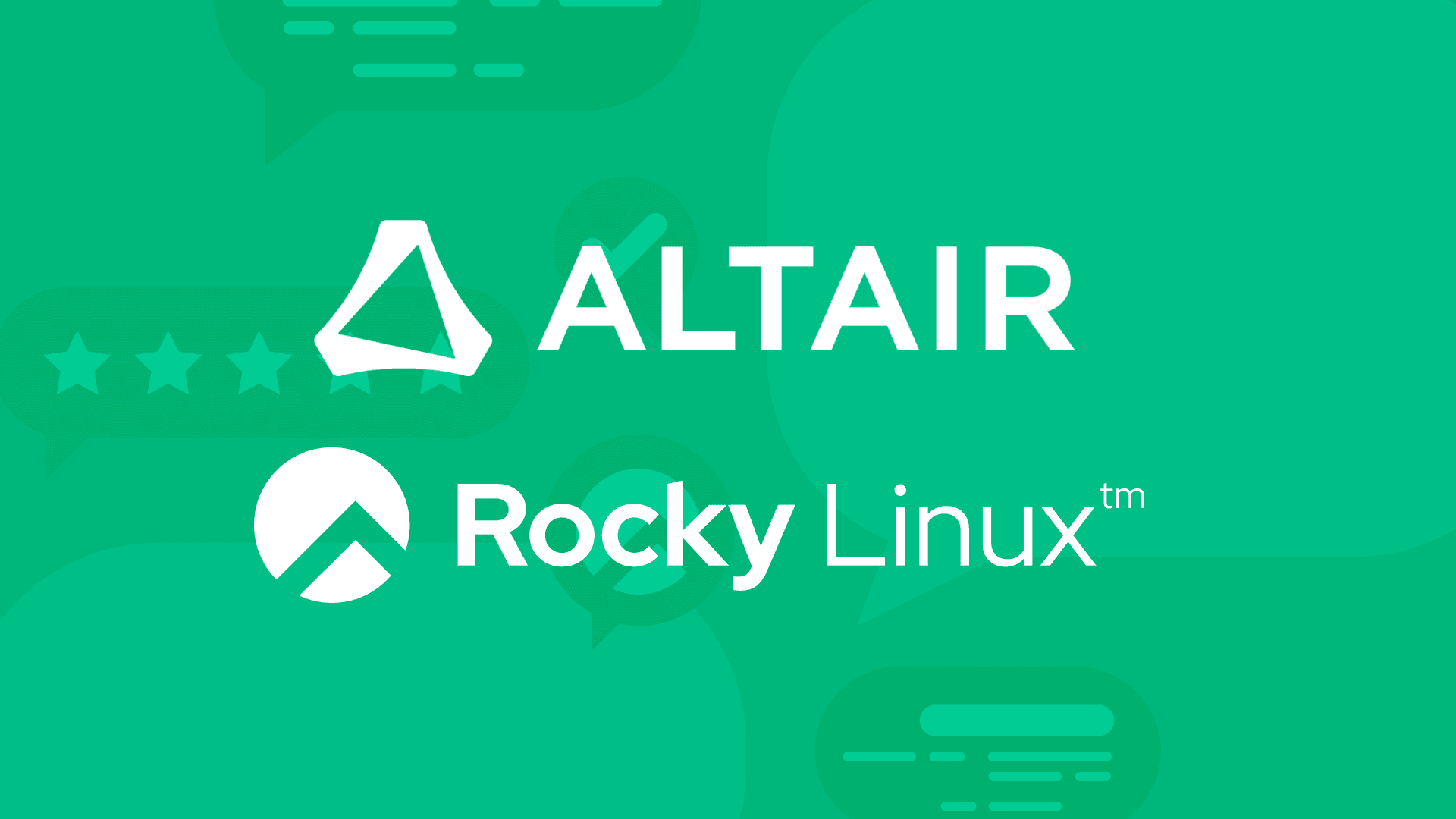3 min read
Rocky Linux Powers Supercomputers, Clusters, HPC, & AI

Rocky Linux burst from the ashes of the CentOS project and quickly rose to be one of the fastest-growing enterprise distributions. Especially true in the high performance computing world, Rocky Linux provided a comparable, almost identical, operating system with easy migration paths to move off of CentOS. Rocky Linux maintains compatibility with RHEL releases and has implemented a public errata page to help maintain awareness of fixes, enhancements, and most importantly, security updates. While comparatively new, Rocky Linux is already one of the most popular distributions in HPC and is growing across other industry segments as well. Statistics for Extra Packages for Enterprise Linux (EPEL) show that Rocky Linux rapidly leveled up in downloads, even bypassing RHEL itself. It’s no surprise that Rocky Linux is fast becoming the Linux distribution of choice in HPC.
HLRS powers supercomputers with Rocky Linux
HLRS (Höchstleistungsrechenzentrum Stuttgart) is a leading research institute and supercomputer center in Germany. Their flagship installation, called ”Hawk,” delivers 26 PFLOPS peak performance, which was the 30th most powerful system on the Top500 list in November 2022. CIQ met with HLRS at Supercomputing 2022 to learn more about their migration to Rocky Linux. The team at HLRS operates both the compute and login nodes of the Hawk system, a 5,632 node-strong HPE Apollo installation, with Rocky. In addition, Rocky runs the NEC cluster system called “Vulcan,” with roughly 500 compute nodes.
Research and development on Rocky Linux
HLRS supports a wide range of research domains. Researchers are running simulations for particle physics, life sciences, and material sciences, just to name a few areas. These simulations rely on a large range of applications used across these resource domains. Codes that are popular in these fields are already running efficiently on Rocky Linux. This fact demonstrates the compatibility with RHEL and the simple migration path to keep these crucial applications running on systems, including large clusters.
Rocky Linux is here to stay
Gregory Kurtzer is the founder of both CentOS and Rocky. By learning from the past, a new structure around Rocky Linux prevents it from suffering the same fate as CentOS. The Rocky Enterprise Software Foundation secures Rocky Linux to remain a forever free and open source Enterprise Linux for the community to be the true successor of the original CentOS. Each major distribution will have a 10-year life cycle, allowing HPC users and datacenters to build plans around Rocky without worrying about the sudden loss of an OS. While Rocky Linux continues to establish itself as the free CentOS successor in the community, the same Rocky Linux can be extended with professional support options from the official founding and support partner, CIQ. Gregory Kurtzer and his team created CIQ to also secure the commercial enterprise requirements of Rocky Linux. CIQ makes it easy for customers to leave the past behind with a free CentOS and a commercial RHEL version. Today, it’s just Rocky, either free or with official support from CIQ, with support models to easily mix and match.
Cost-conscious support options
CIQ offers support subscriptions for Rocky Linux with a traditional by-the-node model as well as a model that is based on people and teams. Per-node pricing is aimed at smaller deployments where there are only 1 or 2 administrators taking care of the systems. However, when the number of nodes and people grows, linear pricing starts to become an issue. CIQ introduced per-person support to help address this. In this model, each person assigned to the support contract may enter issues with CIQ. Team pricing provides another option to help keep costs lower if the administrative team is larger.
There are two tiers of CIQ support: standard and advanced. The difference between the two options revolves around the service level agreement for response. Standard support provides 1-6 business hours initial response time (depending on severity). For customers or datacenters that are running around the clock with mission-critical work, advanced support provides a worldwide 24/7 initial response time of 15 minutes. Both options help quickly connect customers to expertise in CIQ, and by proxy, the Linux community, to resolve issues quickly and efficiently.
CIQ-supported Rocky Linux helps corporations and organizations meet regulatory and policy requirements. CIQ’s innovative pricing model also convinced many HPC datacenter managers who have not paid for support in the past to reconsider, based on team pricing. Supported Rocky Linux is a cost-conscious way to have an enterprise-level Linux distribution in your HPC environment.
Contact CIQ to learn more about CIQ-supported Rocky Linux.
Built for Scale. Chosen by the World’s Best.
1.4M+
Rocky Linux instances
Being used world wide
90%
Of fortune 100 companies
Use CIQ supported technologies
250k
Avg. monthly downloads
Rocky Linux



